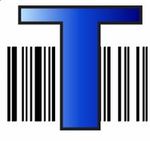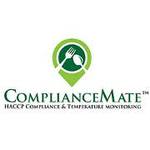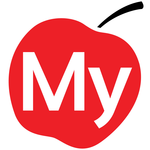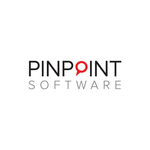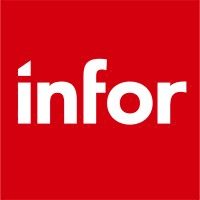What Is Food Traceability Software?
Software for food traceability is a potent instrument made to help food companies monitor and trace their goods all the way through the supply chain. It offers a complete approach to controlling and keeping an eye on food safety, quality, and compliance. This software tracks the flow of food products from the farm to the table using data capturing methods and unique identifying numbers.
It guarantees accountability and transparency throughout the whole supply chain by enabling companies to precisely and effectively track the origin and destination of their products. Improving food safety is one of the main benefits of food traceability software. Food companies can take prompt action to recall impacted items and stop the spread of foodborne illnesses by promptly determining the source of any possible contamination.
Software for food tracking is also essential for meeting legal criteria. It assists companies in adhering to safety standards and keeping the documents required for audits and inspections. As a result, they become more credible and gain the trust of customers. Additionally, this software offers useful insights into supply chain processes, enabling companies to pinpoint opportunities for cost reduction and improvement.
By giving them real-time updates on product details and delivery status, it also helps them to improve their connections with suppliers and customers. Businesses should search for capabilities like barcode scanning, GPS tracking, real-time data monitoring, and customisable reporting when evaluating food traceability software alternatives.
Additionally, they should make sure that the software complies with industry standards and laws, including the Food Safety Modernization Act (FSMA) and the Global Food Safety Initiative (GFSI). For food enterprises to maintain compliance, increase operational efficiency, and guarantee the safety and quality of their products, they must invest in food traceability software. Businesses can boost consumer trust, improve brand reputation, and eventually spur corporate growth by putting this software into practice.
What Are The Recent Trends In Food Traceability Software?
Because it allows items to be tracked from farm to fork, food traceability software is a vital tool for companies in the food sector. The market for food traceability software has been expanding and changing quickly in recent years due to the increased demand for food safety and transparency.
Buyers should be aware of the following recent developments in food traceability software.
1. Blockchain Technology: The application of blockchain technology is one of the most important developments in food traceability software. By enabling safe and transparent food product tracking, this technology lowers the possibility of fraud and guarantees the veracity of food claims.
2. Integration With IoT: Internet of Things (IoT) technology is rapidly being combined with food traceability software. Because of this connection, food goods can be monitored in real time across the supply chain, enabling companies to see possible problems early and take appropriate action.
3. Advanced Analytics: Using advanced analytics has become crucial as a result of the growing amount of data that food traceability software is gathering and storing. This enables companies to learn important things about their supply chain operations, product quality, and consumer behavior.
4. Mobile Applications: Using mobile applications for food traceability software has grown in popularity. Businesses may use these apps to track and trace their items while they're on the way, which makes it simpler to spot and resolve any potential problems.
5. Increased Customization And Integration: As food traceability software advances, it also integrates more easily with other business systems. Furthermore, customization is becoming more and more popular, allowing companies to modify software to fit their unique requirements and workflows.
Benefits Of Using Food Traceability Software
A useful tool for food firms to monitor and control their supply chain from raw ingredients to the final customer is food traceability software. In the complicated food market of today, where customers are calling for responsibility and transparency from food producers and merchants, this technology has grown in significance. Food traceability software is an essential investment for any food industry because it offers numerous advantages. Let's examine some of these benefits in more detail:
1. Better Quality Control: The ability to uphold high standards of quality across the supply chain is one of the main advantages of food traceability software. Businesses can promptly spot any possible problems and take corrective action to preserve product quality by recording and monitoring ingredients, procedures, and storage conditions in real-time.
2. Improved Food Safety: Recalls and foodborne diseases are major worries for consumers and businesses alike. By allowing companies to track the origin of ingredients and their journey through the supply chain, food traceability software facilitates the detection and containment of possible contamination problems.
3. Adherence To Regulations: The food sector is subject to strict regulations, and failure to comply may have dire repercussions. Businesses can reduce their risk of fines or legal action by ensuring they are in compliance with government standards and regulations by putting food traceability software into place.
4. Increased Productivity And Efficiency: Food traceability software can help organizations save time and money by automating and streamlining operations, which lowers human error and manual labor. Businesses are able to concentrate on other important duties as a result, which boosts output and efficiency.
5. Develop Customer Trust: Transparency and trust are essential in today's conscientious consumer market. Food traceability software can assist increase consumer trust by giving precise and comprehensive information about a product's path from farm to table. Customers are more inclined to choose companies that put food safety and transparency first.
Important Factors To Consider While Purchasing Food Traceability Software?
Buyers should take into account a number of crucial criteria when investing in food traceability software. Because it facilitates the tracking and management of food product production, distribution, and sales, this software is essential for companies in the food sector. Here are some important things to consider before making your purchase to make sure you obtain the best software for your company:
1. Regulation Compliance: Whether the food traceability software conforms with all the rules and guidelines established by the food and safety authorities is the most crucial consideration. This covers laws and rules pertaining to recalls, labeling, and food safety.
2. Ease Of Use: Seek software that is easy for staff to use and requires little training. In addition to being challenging to comprehend, complex software can cause mistakes and delays in your business processes.
3. Integration With Present Systems: Verify if the program is simple to integrate with your present procedures and systems. This will lower the possibility of data loss during installation and guarantee a seamless transition.
4. Scalability: Your demand for food traceability will increase as your company expands. Select software that can be readily expanded to handle the growing amount of transactions and data.
5. Data Management And Analytics: The software for food traceability should have strong data management features that make it simple to store, retrieve, and examine data. This will assist you in determining where your procedures need to be improved and in making well-informed decisions.
6. Real-Time Tracking: Ensuring the safety and quality of food products requires real-time tracking. Select software that can give you accurate and current information about your products and that allows for real-time tracking.
7. Quality Control: You should be able to monitor and maintain the quality of your products throughout the supply chain with the help of the software's quality control functions. Making sure your items adhere to the necessary standards and regulations is crucial.
8. Support And Training: To ensure you get the most out of your software, look for a vendor who provides thorough support and training. This will guarantee that your staff members have all they need to operate the software efficiently.
9. Cost And Return On Investment: Take into account both the software's price and possible return on investment. Seek out software that improves the bottom line of your company and offers good value for the money. When buying food traceability software for your company, you may make an informed choice by taking these considerations into account. Selecting a trustworthy software vendor is crucial to the success of your food traceability initiatives. You may improve your food-related activities' profitability, productivity, and safety with the correct software.
What Are The Key Features To Look For In Food Traceability Software?
There are a few essential elements to consider while choosing the best food traceability software for your company. Your traceability procedures' efficacy and efficiency can be significantly impacted by these aspects, which will eventually improve compliance and quality control.
The following are the most important factors to take into account while assessing food traceability software:
1. Traceability Functionality: Monitoring and tracking the flow of food items across the supply chain is the main objective of food traceability software. Strong traceability features in the program should make it simple to determine the source, location, and transit of any ingredient or product, along with related data like batch and lot numbers.
2. Real-Time Monitoring: Throughout your products' supply chain journey, the software should offer real-time monitoring. This enables you to monitor your items' movements from one place to another, guaranteeing their safety and adherence to rules.
3. Automated Data Capture: Seek software with automated data capture features, which can save time and drastically lower the possibility of human error. With the help of this feature, you may swiftly and precisely record product information by scanning barcodes, RFID tags, or other automatic data capture techniques.
4. Integration With Current Systems: Select software that can easily interface with your current systems, such as inventory control or enterprise resource planning (ERP). This would reduce the possibility of errors and save time by enabling smooth data flow and doing away with the necessity for human data entry.
5. Lot Tracking And Recall Management: The capability to monitor and, if required, recall particular product batches or lots is one of the most crucial aspects of food traceability software. Seek out software that has this capability since it might protect your company from possible damages in terms of money and reputation.
6. Regulation Compliance: Because the food sector is heavily regulated, your traceability software should go by the rules established by regulatory agencies like the FDA and CFIA. Software with industry-specific compliance capabilities, like allergen tracking and labeling, should be selected.
7. Data Visualization And Reporting: To analyze and comprehend your food traceability data, you need a strong reporting and data visualization platform. Seek out software that can produce thorough reports for analysis and decision-making, as well as dashboards that may be customized.
Why Do Businesses Need Food Traceability Software?
Software for food traceability is becoming more and more important for companies in the food sector. Businesses want a strong and dependable system in place to track their products along the supply chain, given the growing worries about food safety and laws. Businesses require food traceability software for the following main reasons:
1. Regulation Adherence: Food traceability software is essential for assisting companies in adhering to food safety laws. Businesses can use it to trace their products from the point of origin to the final customer, which makes it simpler to adhere to stringent industry standards and governmental laws.
2. Recall Risk Mitigation: Product recalls pose one of the biggest threats to companies operating in the food sector. Software for food traceability enables companies to promptly locate and monitor the sources of contamination or other problems, lessening the effect of a recall and lowering the risk of customer injury.
3. Gaining Customer Trust: As consumers' awareness of food safety, sustainability, and transparency grows, companies must be able to offer traceability data for their goods. By giving customers up-to-date information about the origin and safety of their products, food traceability software can assist companies in gaining the trust of their customers.
4. Increasing Supply Chain Efficiency: By streamlining supply chain procedures, food traceability software can assist companies in cutting expenses and increasing productivity. It helps companies to efficiently manage shipments, keep an eye on production, and maintain inventory levels, which lowers waste and boosts productivity.
5. Improving Brand Reputation: A brand's reputation is essential to its success in a market that is extremely competitive. Businesses may gain a competitive edge and improve their brand reputation by demonstrating their dedication to food safety and quality with the use of food traceability software.
How Much Time Is Required To Implement Food Traceability Software?
The size and complexity of your company, the software type you choose, and the volume of data you must enter can all have a significant impact on how long it takes to implement food traceability software. Implementing food traceability software completely and reaping its benefits can take a few weeks to several months on average.
Having a thorough understanding of your business operations and collecting all pertinent data to enter into the software are essential in the early stages. This could entail standardizing and arranging data from several sources, including distribution networks, production and packaging procedures, and supplier and inventory data.
The program can be set up and tailored to your unique company requirements once the data is ready. This could entail generating reports and analytics dashboards, implementing traceability rules, and assigning unique codes to every product. To guarantee a seamless and effective deployment, it is crucial to include pertinent stakeholders at this point, such as your production managers and IT staff.
Another important part of the implementation process is testing and training. All staff members who will use the program, from entry-level operators to upper management, should participate in training sessions. This will guarantee that the software and its features are properly understood. Before the software goes live, testing and troubleshooting should be done to find any problems or anomalies.
Overall, having well-prepared and organized company data and selecting software that is easy to use and customize will greatly cut down on the amount of time needed for installation. To guarantee a smooth and prompt rollout, close collaboration with the software vendor is also advised during the implementation phase.
What Is The Level Of Customization Available In Food Traceability Software?
Software for food traceability can be customized to varied degrees to meet the unique requirements of diverse food sector businesses. Options for customisation may differ based on the size and nature of the company. At the most basic level, users can manage and customize product information, including nutrition facts, ingredients, and allergens, using most food traceability software.
Businesses that deal with specialized or unique items that need certain information to be shown on labels and packaging must offer this degree of personalization. As the level of customization increases, some software lets users design and oversee their own traceability processes. This makes it possible for companies to design a traceability procedure that satisfies both industry standards and their own needs.
Customization enables businesses to adopt a procedure that is suited to their needs, such as seafood companies, which can have different traceability requirements than poultry companies. Furthermore, a lot of food traceability software allows for connectivity with other platforms and systems that the company uses. This reduces human entry and data inaccuracies while enabling seamless data transfer between apps, offering a great degree of flexibility.
Businesses can also modify their traceability procedures without completely redesigning their infrastructure by integrating with current systems. Additionally, some software provides analytics and report customization capabilities. Businesses can create reports that are pertinent to their operations and particular needs thanks to this degree of flexibility. For instance, a shop would need data on product expiration dates, while a food manufacturer might need to create reports on ingredient sources.
Which Industries Can Benefit The Most From Food Traceability Software?
Businesses in the food industry rely on food traceability software to track and monitor the movement of their products from farm to fork. This robust software program offers real-time insight and transparency throughout the complete supply chain by utilizing cutting-edge technologies like blockchain, RFID, and barcoding. All companies engaged in the manufacturing and distribution of food items can benefit from the use of food traceability software, but some sectors stand to gain even greater benefits.
Let's examine which sectors stand to gain the most from food traceability software.
1. Agriculture Sector: As the sector that produces the raw materials for a variety of food items, food traceability software has the potential to revolutionize the sector. Farmers may make sure their crops fulfill the required quality requirements by using this program to track important data including seed origins, fertilizer use, and pesticide treatments. In addition to being helpful for regulatory compliance, this information aids farmers in making well-informed decisions that will enhance their operations and boost productivity.
2. Food Processing And Manufacturing: It might be difficult to manually keep track of the numerous ingredients used in the food processing and manufacturing sector since they come from different sources. By offering end-to-end traceability of materials, food traceability software streamlines this procedure and guarantees that only safe and high-quality ingredients are utilized during production. It also aids in quickly recognizing and resolving any possible hazards, like allergies, contamination, or recalls.
3. Retail And Distribution: Since retailers and distributors are in charge of making sure that the goods they offer to customers are both safe and of the highest caliber, food traceability software is essential for them. They can use this program to track the products in their inventory, including batch numbers, expiration dates, and storage conditions, as well as their origin and travel. They may preserve their consumers' trust by promptly identifying and removing any potentially dangerous products from their shelves using this information.
4. Food Service Industry: Using food traceability software can be very advantageous for cafés, restaurants, and other food service enterprises. They can use this application to keep track of the ingredients that go into their recipes, making sure that they are high-quality and safe. Additionally, this technology can optimize inventory levels and manage food waste, which can save money and improve sustainability standards.
Conclusion
To sum up, companies in the food sector can benefit greatly from food traceability software. This technology makes it simpler to track items and ingredients, guaranteeing precision and adherence to legal requirements. Additionally, it offers useful information and insights for risk reduction, quality assurance, and supply chain management.
When thinking about investing in food traceability software, be sure to carefully evaluate your budget and company requirements. Seek out a system that provides real-time data and analytics, is easy to use, and is adaptable. It should also be able to store data securely and integrate with your existing systems. Additionally, take into account the software provider's training choices, customer service, and reputation.
These elements will affect your implementation's overall effectiveness and success. Purchasing a dependable and strong food traceability program is crucial for preserving food safety, legal compliance, and consumer confidence in the fast-paced and intricate food sector of today.
Your company can get a competitive edge in the market by streamlining operations and increasing efficiency with the correct system in place. For long-term success, thoroughly consider your options and select the food traceability software that best meets your company's requirements.










